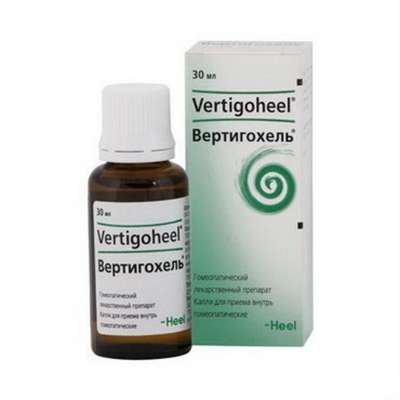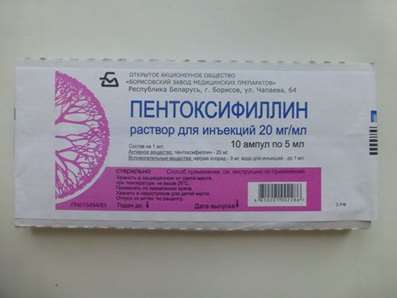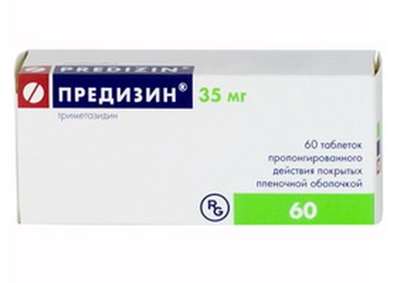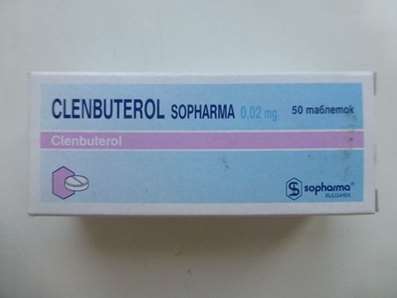Instruction for use: Haloperidol
I want this, give me price
The Latin name of the substance Haloperidol
Haloperidolum (genus. Haloperidoli)
Chemical name
4- [4- (4-Chlorophenyl) -4-hydroxy-1-piperidinyl] -1- (4-fluorophenyl) -1-butanone (as decanoate or lactate)
Gross formula
C21H23ClFNO2
Pharmacological group:
Neuroleptics
The nosological classification (ICD-10)
F10.2 Syndrome of alcohol dependence: Alcoholism; Alcohol addiction; posiomania; Dependence on alcohol; dipsomania; drunken state; alcohol abuse; Ideatornoy violations in alcoholism; Quarterly booze; Obsessive craving for alcohol; Neurotic symptoms of alcoholism; Craving for alcohol; Psychoorganic syndrome in chronic alcoholism; Reduced craving for alcohol; chronic alcoholism
F20 Schizophrenia: Schizophrenic conditions; Exacerbation of schizophrenia; Schizophrenia; Chronic schizophrenia; Dementia praecox; Bleuler's disease; Psychotic discordant; Dementia early; The febrile form of schizophrenia; Chronic schizophrenic disorder; Psychosis of the schizophrenic type; Acute form of schizophrenia; Acute schizophrenic disorder; Cerebral Organic Insufficiency in Schizophrenia; Acute attack of schizophrenia; Schizophrenic psychosis; Acute schizophrenia; Sluggish schizophrenia; Sluggish schizophrenia with apathoabulic disorders; Acute stage of schizophrenia with excitation
F22.0 Delusional Disorder: Delirium; Acute paranoid state; Othello Syndrome; Paranoid-hallucinatory state; Paranoid state; Paranoid delirium; paranoid psychosis; Paranoid delirium; Attack of delirium; The attack of polymorphic delirium; Psychotic disorder with a predominance of hallucinatory-paranoid symptoms and disorders of thinking; Anxious-delirious component; Anxiety and Paranoid Syndrome
F29 Inorganic psychosis, unspecified: Childhood psychoses; Psychomotor agitation in psychoses; Hallucinatory-delusional disorders; Hallucinatory-delusional syndrome; Intoxication psychosis; Manic-delusional disorders; Manic chronic psychosis; Manic psychosis; Acute psychosis; paranoid psychosis; Paranoid psychosis; Subacute psychosis; Presenile psychosis; Psychosis; Intoxicating psychosis; Psychosis is paranoid; Psychosis in children; Reactive psychosis; Chronic psychosis; Chronic hallucinatory psychosis; Chronic psychosis; Chronic psychotic disorder; Schizophrenic psychosis
F30 Manic episode: Manic-depressive disorder; Manic agitation; Manic state; Manic conditions; A manic condition; Manic syndrome; Acute manic syndrome
F45 Somatoform disorders: Psychosomatic disorder; Psychosomatic disorders; Psychosomatic diseases; The state of excitement in somatic diseases; Functional psychosomatic disorders of the cardiovascular system
F60.2 Dissocial personality disorder: Antisocial personality; Psychopathic personality; Psychopathy; Psychopathy of an excitable type; Psychopathy and psychopathic conditions; Psychopathy of a hysterical type; Psychopathy with a predominance of anxiety and anxiety; Braking Personality
F79 Mental retardation, unspecified: Mental retardation; Infantilism mental; Violation of mental activity; Oligophrenia; Lag behind mental development; Delayed development of intellectual abilities in children and adolescents; Slowed mental development in children; Maloumia; Oligopsihia; Mental failure; Impaired mental function; Mental retardation; Lack of intellectual development in children; Lack of mental development in children; Mental retardation; Lack of mental development in children; Mental retardation
F91 Behavioral disorders: Juvenile and other behavioral disorders; Destructive behavior; Violation of behavior; Behavioral disorders; Mixed behavioral disorders; Behavioral Disorder; Behavioral disorder in adolescents with 15 years of age and adults; Violations in behavior; Behavioral disorders in childhood; Behavioral disorders in old age; Behavioral disorders in children; Behavior Disorder; Behavioral disorders in children
F95.2 Combining vocalisms and multiple motor tics [de la Tourette's syndrome]: Gilles de la Tourette's disease or syndrome; Gilles de la Tourette's Syndrome; Tourette's disease; Gilles de la Tourette's Syndrome; Gilles de la Tourette syndrome; The syndrome of Gilles de la Tourette; Gilles de la Tourett Syndrome; Tourette's Syndrome
F98.5 Stammering [Stammering]: Stammering and other speech defects in children; Logoneurosis; The clonic form of stuttering; Stuttering
G10 Huntington's disease: Huntington's disease (chorea); Houteon Huntington; Goettington's Horea; Chorea degenerative; Chorea hereditary; Chorea progressive chronic
R11 Nausea and vomiting: Postoperative vomiting; Nausea; Vomiting; Vomiting in the postoperative period; Vomiting medication; Vomiting in the background of radiation therapy; Vomiting uncontrollable; Vomiting in radiation therapy; Persistent vomiting; Indomitable vomiting; Postoperative nausea; Vomiting with chemotherapy; Vomiting of the central genesis; Vomiting with cytotoxic chemotherapy; Persistent hiccups; Repeated vomiting
R44.3 Hallucinations, unspecified: Hallucinatory conditions; Hallucinations; Acute hallucinatory state; Chronic hallucinatory conditions
CAS Code
52-86-8
Characteristics of the substance Haloperidol
Neuroleptic, butyrofenone derivative.
Amorphous or microcrystalline powder from white to light yellow color. Virtually nerastvorim in water, is limitedly soluble in alcohol, methylene chloride, ether. The saturated solution has a neutral to slightly acidic reaction.
Pharmacology
Pharmacological action - antipsychotic, neuroleptic, antiemetic, sedative.
It blocks postsynaptic dopaminergic receptors located in the mesolimbic system (antipsychotic action), hypothalamus (hypothermic effect and galactorrhea), trigger zone of the vomiting center, extrapyramidal system; inhibits central alpha-adrenergic receptors. It inhibits the release of mediators, reducing the permeability of presynaptic membranes, violates the reverse neuronal capture and deposition.
Eliminates persistent personality changes, delusions, hallucinations, mania, increases interest in the environment. Affects vegetative functions (reduces the tone of the hollow organs, motility and secretion of the gastrointestinal tract, eliminates spasms of blood vessels) in diseases accompanied by excitement, anxiety, fear of death. Prolonged reception is accompanied by a change in the endocrine status, in the anterior pituitary gland prolactin production increases and decreases - gonadotropic hormones.
When ingested 60% is absorbed. Binding to blood plasma proteins - 92%. Tmax when taken orally - 3-6 h, with the / m introduction - 10-20 min, with the / m introduction of the prolonged form (haloperidol decanoate) - 3-9 days (in some patients, especially in old age, - 1 day ). Intensively distributed in tissues, tk. easily passes the histohematological barriers, including GEB. Vss is 18 l / kg. Metabolized in the liver, subjected to the effect of the first passage through the liver. A strict relationship between the concentration in the plasma and the effects is not established. T1 / 2 for oral administration - 24 h (12-37 h), with the / m introduction - 21 h (17-25 h), with iv - 14 h (10-19 h), for haloperidol decanoate - 3 week (single or multiple doses). It is excreted by the kidneys and with bile.
Effective in patients resistant to other neuroleptic drugs. Has some activating effect. In hyperactive children, eliminates excessive motor activity, behavioral disorders (impulsivity, difficulty concentrating, aggressiveness).
Application of the substance Haloperidol
Psychomotor agitation of various genesis (manic state, oligophrenia, psychopathy, schizophrenia, chronic alcoholism), delirium and hallucinations (paranoid states, acute psychosis), Gilles de la Tourette's syndrome, Huntington's chorea, psychosomatic disorders, behavioral disorders in the elderly and children, stuttering , long-lasting and resistant to therapy, vomiting and hiccups. For haloperidol decanoate: schizophrenia (maintenance therapy).
Contraindications
Hypersensitivity, severe toxic CNS or coma depression caused by drug use; CNS diseases, accompanied by pyramidal and extrapyramidal symptoms (including Parkinson's disease), epilepsy (the convulsive threshold may decrease), severe depressive disorders (possibly exacerbation of symptoms), cardiovascular diseases with decompensation phenomena, pregnancy, breast-feeding, age to 3 years.
Restrictions on the use
Glaucoma or predisposition to it, pulmonary insufficiency, hyperthyroidism or thyrotoxicosis, impaired liver and / or kidney function, urinary retention.
Application in pregnancy and lactation
Contraindicated in pregnancy.
The action category for fetus by FDA is C.
For the duration of treatment, breastfeeding should be stopped (penetrates into breast milk).
Side effects of the substance Haloperidol
From the side of the nervous system and sensory organs: akathisia, dystonic extrapyramidal disorders (including spasm of the muscles of the face, neck and back, tick-like movement or twitching, weakness in the arms and legs), parkinsonian extrapyramidal disorders (including difficulty in talking and swallowing, a shaky gait, a tremor of hands and fingers), headache, insomnia, drowsiness, anxiety, anxiety, agitation, agitation, euphoria or depression, lethargy, epileptic seizures, confusion, exacerbation of psychosis and hallucinations ation, tardive dyskinesia (see "Precautions."); impaired vision (including acuity), cataract, retinopathy.
From the cardiovascular system and blood (hematopoiesis, hemostasis): tachycardia, arterial hypotension / hypertension, prolongation of the QT interval, ventricular arrhythmia, changes in the ECG; there are reports of sudden death, prolongation of the QT interval and heart rhythm disturbances such as "pirouettes" (see "Precautions"); transient leukopenia and leukocytosis, erythropenia, anemia, agranulocytosis.
On the part of the respiratory system: laryngospasm, bronchospasm.
On the part of the intestine: anorexia, constipation / diarrhea, hypersalivation, nausea, vomiting, dry mouth, abnormal liver function, obstructive jaundice.
From the genitourinary system: breast engorgement, unusual milk secretion, mastalgia, gynecomastia, menstrual irregularity, urinary retention, impotence, increased libido, priapism.
From the skin: maculopapular and acne-like skin changes, photosensitivity, alopecia.
Other: neuroleptic malignant syndrome, accompanied by hyperthermia, muscle rigidity, loss of consciousness; hyperprolactinemia, sweating, hyperglycemia / hypoglycemia, hyponatremia.
Interaction
Strengthens the effect of antihypertensive drugs, opioid analgesics, antidepressants, barbiturates, alcohol, weakens - indirect anticoagulants. It inhibits the metabolism of tricyclic antidepressants (their level increases in plasma) and increases toxicity. With the long-term administration of carbamazepine, the level of haloperidol in the plasma decreases (it is necessary to increase the dose). In combination with lithium, it can cause a syndrome similar to encephalopathy.
Overdose
Symptoms: pronounced extrapyramidal disorders, arterial hypotension, drowsiness, retardation, in severe cases - coma, respiratory depression, shock.
Treatment: there is no specific antidote. Possible gastric lavage, the subsequent administration of activated charcoal (if overdose is associated with ingestion). With respiratory depression, ventilator, with a pronounced decrease in blood pressure, the introduction of plasma-replacing fluids, plasma, norepinephrine (but not adrenaline!), To reduce the severity of extrapyramidal disorders - central holinoblokatory and anti-Parkinsonics.
Routes of administration
IV, IM and inside.
Precautions for the substance Haloperidol
Increased mortality in elderly patients with psychosis associated with dementia. According to the Food and Drug Administration (FDA) 1, antipsychotic drugs increase mortality in elderly patients when treating psychosis with dementia. An analysis of 17 placebo-controlled studies (10 weeks in duration) in patients taking atypical antipsychotic drugs revealed an increase in mortality associated with drug use by 1.6-1.7 times compared to patients receiving placebo. In typical 10-week controlled trials, the percentage of death associated with taking the drug was about 4.5%, while in the placebo group it was 2.6%. Although the causes of death were different, most were associated with cardiovascular problems (such as heart failure, sudden death) or pneumonia. Observational studies indicate that, like atypical antipsychotics, treatment with conventional neuroleptics may also be associated with an increase in mortality.
Late dyskinesia. As with other antipsychotics, taking haloperidol is associated with the development of tardive dyskinesia, a syndrome characterized by involuntary movements (may occur in some patients with prolonged treatment or occur after drug therapy has been discontinued). The risk of developing tardive dyskinesia is higher in elderly patients with high-dose therapy, especially in women. Symptoms are persistent and in some patients - irreversible: the rhythmic involuntary movements of the tongue, face, mouth and jaw (for example, bulging out the tongue, inflating the cheeks, wrinkling of the lips, uncontrolled chewing movements), sometimes they can be accompanied by involuntary movements of limbs and trunk. With the development of tardive dyskinesia, it is recommended to cancel the drug.
Dystonic extrapyramidal disorders are most frequent in children and young people, and also at the beginning of treatment; May be weakened within 24-48 hours after haloperidol is discontinued. Parkinsonian extrapyramidal effects are more common in older people and are detected in the first few days of treatment or with prolonged therapy.
Cardiovascular effects. Cases of sudden death, prolongation of the QT interval and torsades de pointes were recorded in patients receiving haloperidol. Care should be taken in the treatment of patients with predisposing factors to prolong the QT interval, incl. violation of electrolyte balance (especially hypokalemia and hypomagnesemia), simultaneous reception of drugs that extend the QT interval. In the treatment of haloperidol it is necessary to regularly monitor ECG, blood formulas, assess the level of hepatic enzymes. During therapy, patients should refrain from engaging in potentially dangerous activities that require increased attention, rapid mental and motor reactions.

 Cart
Cart





